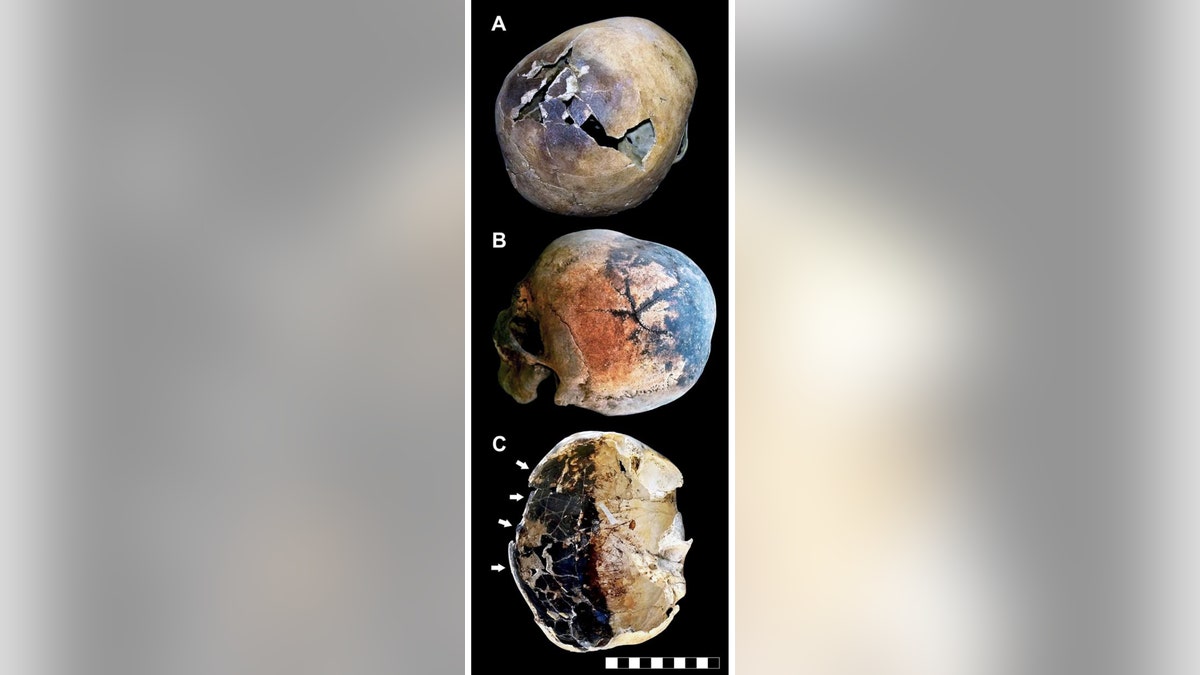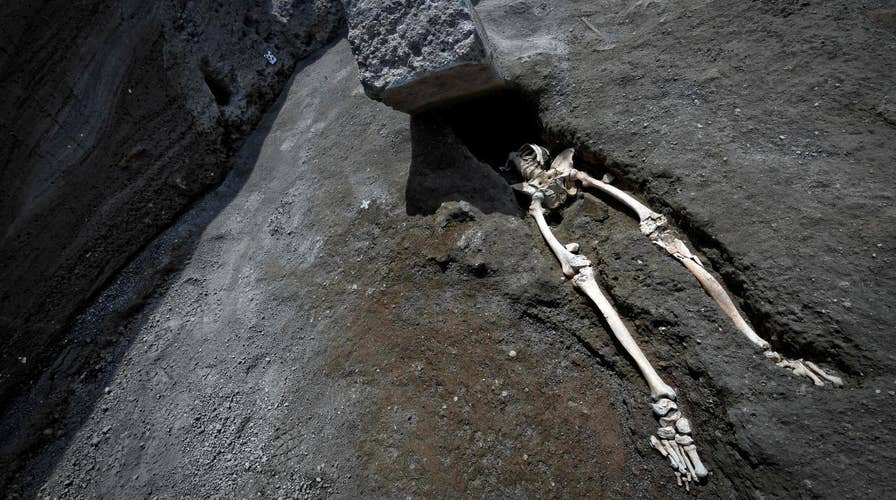660-pound flying stone killed a man in Pompeii
Archaeologists have uncovered the skeleton of a man crushed by 660-pound stone during the eruption of Mount Vesuvius.
Talk about a headache.
When Mount Vesuvius erupted, the explosion caused such extreme heat that victims' skulls exploded, their blood boiled and their muscles, flesh and brains were replaced with ash, according to a new study.
"New investigations on the victims' skeletons unearthed from the ash deposit filling 12 waterfront chambers have now revealed widespread preservation of atypical red and black mineral residues encrusting the bones, which also impregnate the ash filling the intracranial cavity and the ash-bed encasing the skeletons," the study's abstract reads.

Skeletons showing "life-like" stance: A child (A) and a young adult male (B) unearthed from the ash surge deposit. The child’s corpse displays flexure only of the upper limbs, indicative of an incipient “pugilistic attitude”. Full exhibit of this heat-induced stance is never found in the victims' corpses discovered at Herculaneum. (Credit: PLoS One)
HOW ANCIENT GREEKS PREDICTED KILLER ROBOTS, DRIVERLESS CARS AND EVEN AMAZON ALEXA
The abstract continues: "The extraordinarily rare preservation of significant putative evidence of hemoprotein thermal degradation from the eruption victims strongly suggests the rapid vaporization of body fluids and soft tissues of people at death due to exposure to extreme heat."
The study was published in the scientific journal PLOS One and was conducted by several researchers, including lead author Pierpaol Petrone.

A. Skull of an older-aged adult male showing a dark stained and cracked parietal bone. B. Skullcap affected by a “stellate” fracture consisting of several cracks which radiate from a common center, characterized by charred outer margins. C. Exploded skull showing a partly dark stained inner table (right side, adult male; charring of the fractured margins is evident (white arrows). The skull of this victim was lying in the ash bed on its left side. (Credit: PLOS)
The researchers investigated the skeletal remains of those killed in Herculaneum, a town located four miles away from the volcano. In addition to Pompeii, which was buried, Herculaneum "was suddenly hit and overwhelmed by volcanic ash avalanches that killed all its remaining residents," the study notes.
The experts believed the temperatures from the volcanic explosion were anywhere between 750 and 930 degrees Fahrenheit. For comparison purposes, water boils at 212 degrees Fahrenheit.
On Aug. 24, 79 A.D., Mt. Vesuvius erupted in Italy with a thermal energy 100,000 times more powerful than the atomic bombs over Hiroshima and Nagasaki that ended World War II.
Vesuvius shot a cloud of stones, ash and volcanic gas 21 miles into the sky and buried at least 1,000 people (the exact number will never be known) under dozens of feet of lava in the cities of Pompeii and Herculaneum and some outlying villas.
The skeletal remains of the dead, preserved in the molten rock, were not known even to exist until they were discovered by a surveying engineer in the mid-18th century. They have been a source of fascination for archaeologists ever since.
ROMAN 'HAND OF GOD' UNEARTHED BY ARCHAEOLOGISTS NEAR HADRIAN'S WALL
Earlier this year, researchers discovered a man who was initially thought to have been crushed by a large block of stone while attempting to flee the eruption, may have actually died of "asphyxia caused by the pyroclastic flow.” Archaeologists also recently unearthed the final resting place of an ancient racehorse among the ruins of Pompeii.
Vesuvius, which is the only active volcano on mainland Europe, experienced its last serious eruption in 1944, according to LiveScience.
The Associated Press and Fox News' James Rogers contributed to this article. Follow Chris Ciaccia on Twitter @Chris_Ciaccia
